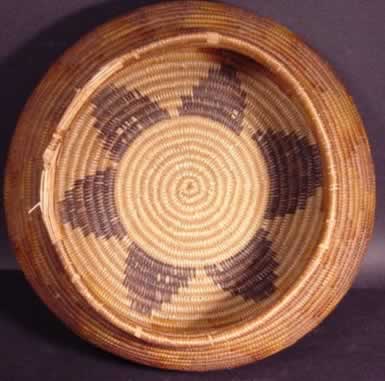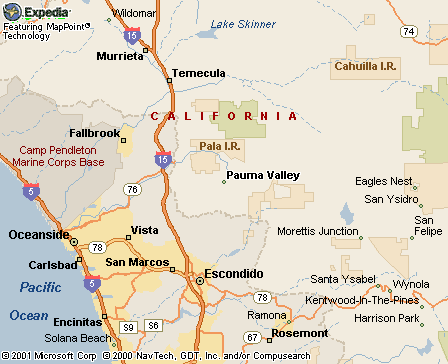|
|
Canku Ota |
|
|
(Many Paths) |
||
|
An Online Newsletter Celebrating Native America |
||
|
December 15, 2001 - Issue 51 |
||
|
|
||
|
Basket Weaving Demonstrations to be Held at Indian Marketplace |
||
|
by Cheryl Walker
Signs on San Diego - December
1, 2001
|
||
|
|
|
But somewhere along the line, the art of basket weaving didn't get passed on to Fosselman's generation. She and several other Luiseño women want to keep the American Indian art alive, so they will demonstrate it at the Native American Marketplace at Casino Pauma. Fosselman has been making baskets with her cousins Diania Caudell and Linda Foussat. "I've always taken care of the educational and cultural aspect of Native Americans, but I never did the basket weaving," Caudell said. "So I called other women and asked them if they wanted to learn." Caudell contacted Teeter Marie Romero, of the Acjachemen Nation, from San Juan Capistrano, who taught herself to make baskets by reading and studying the craft more than 30 years ago. "We knew who we were, but
we didn't know what we did," Romero said. "We knew with this
generation we would be losing so much if we didn't learn and pass it
on to others. So now I do several classes and we have quite a group
that comes." "It doesn't grow readily around here," said Romero, who belongs to the California Basket Weavers Association. "It grows by the water and it needs a lot of hot sun. There is some coastal juncus around. Today I was riding my horse and I found some and I was so excited. We also have a gathering spot of juncus in San Juan Capistrano that we keep to ourselves and don't let anyone know about because it takes a long time to grow. We all have our little stashes. We just need to be able to find it in our own area." Juncus has to be split, sized and dried before weaving. That takes at least six months. Yucca plants can also be used and they're much easier to find. There are several varieties of baskets made by American Indians. Some take longer to make than others, depending on whether they are are used for cooking, gathering food, traveling or special ceremonies. "I once took four years to make one basket," Romero said. "There was an acorn basket, three feet in diameter, that took two people to make. You can make a basket for anything and everything -- you can even make one in an hour or two to serve the same purpose as a plastic bag, put a handle on it and away you go." Romero meets with Fosselman, Caudell and Foussat every week for lessons in private homes in North County. "As we've learned, we've also taught each other," Romero said. "Our classes are open to anyone. It's nice to be able to teach people what you love to do and something that's so close to your heart." For information on the classes, call (760) 941-0275.
|
|
|
||
|
|
||
| Canku Ota is a free Newsletter celebrating Native America, its traditions and accomplishments . We do not provide subscriber or visitor names to anyone. Some articles presented in Canku Ota may contain copyright material. We have received appropriate permissions for republishing any articles. Material appearing here is distributed without profit or monetary gain to those who have expressed an interest. This is in accordance with Title 17 U.S.C. section 107. | ||
|
Canku Ota is a copyright © 2000, 2001, 2002 of Vicki Lockard and Paul Barry. |
||
|
|
|
|
|
The "Canku Ota - A Newsletter Celebrating Native America" web site and its design is the |
||
|
Copyright © 1999, 2000, 2001, 2002 of Paul C. Barry. |
||
|
All Rights Reserved. |
||

 PAUMA
VALLEY -- Marlene Fosselman is a Luiseño Indian who has a 100-year-old
basket made by her grandmother on the Pala Indian Reservation.
PAUMA
VALLEY -- Marlene Fosselman is a Luiseño Indian who has a 100-year-old
basket made by her grandmother on the Pala Indian Reservation.
